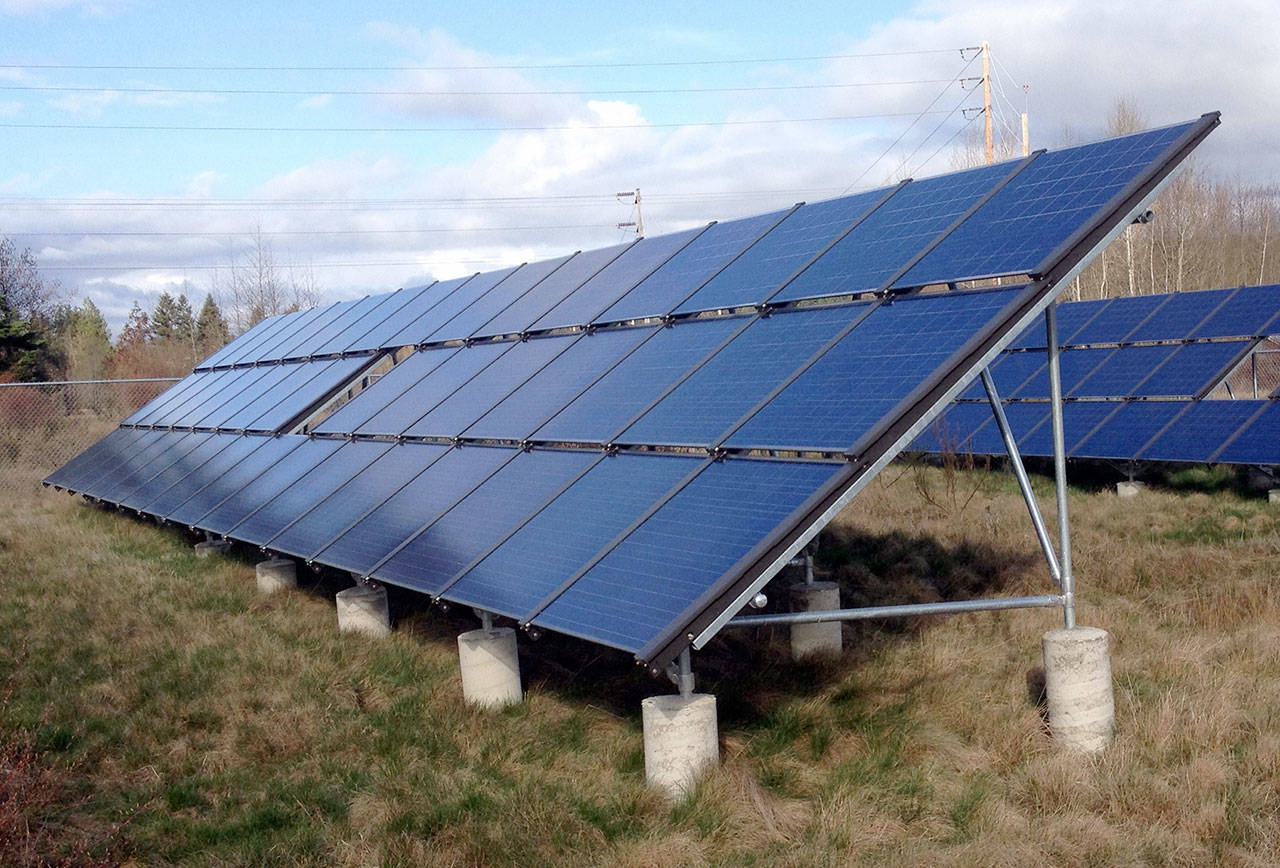PORT TOWNSEND — The Jefferson Solar Group has donated its array of solar panels to the Port of Port Townsend and the Jefferson County International Airport, allowing the facility to have another 10 years of free power.
Ten years ago a unique partnership was formed between the Port of Port Townsend and the group of private solar power investors, with the end result being that a 5,000-square-foot array of solar panels has been powering the airport lights and navigation systems at no cost to the port or taxpayers.
“For 10 years, we’ve gotten free power at the airport,” said Jim Pivarnik, former executive director for the port, who was involved in the initial agreement as deputy director.
“Now it looks like it will continue into the future.”
The Jefferson Solar Group investors who built the solar array benefited from federal and state tax credits and other incentives to promote solar power 10 years ago. Those incentives will run out in June and be replaced by new ones attached to other solar arrays.
Andy Cochrane, owner of Power Trip Energy in Port Townsend, is one of the original investors.
“There have been a couple of different iterations of a community solar law in Washington state,” he said.
“Ten years ago we were on the original version of that and the way that it was set up was that private individuals could form an agreement with a public entity and the private individuals could invest in solar and get tax credits and incentives and the public entity would get the benefit of electricity,” he continued.
Cochrane’s business had many customers who were interested in solar power. Through them, he put together the Jefferson Solar Group.
The array was built near the airport as it was found to be a location that got enough sun to generate the power needed to operate the runway lights and navigation tower. It cost about $125,000 in materials and labor 10 years ago. The group leased the land from the port in exchange for a decreased electrical rate.
For the investment group, there was a 30 percent tax credit at the federal level and at the state level, there was an annual production incentive which at the time paid higher rates for community solar panels as well as for solar panels made in the state, which were available for use during the building process.
The port had initially intended to purchase the solar array from the investment group when the tax credits ran out in June, estimating that the depreciated value of the array would be around $50,000.
But the group beat the port to the punch and decided to donate it instead.
The donation announced Monday was not only out of kindness and support for solar energy, but also it made sense logistically, Cochrane said.
“We’re just going to leave it where it is, where it functions just fine and makes clean power for the rest of its life,” he said.
“From an investor standpoint, with the price of solar coming down, it is not worth removing it and installing it elsewhere.”
Port officials hope to expand on the solar energy array sometime in the future. In the meantime, it will replace some of the laminate on the aging panels to keep them going for at least another 10 years.
________
Ken Park can be reached at kpark@peninsuladailynews.com.

